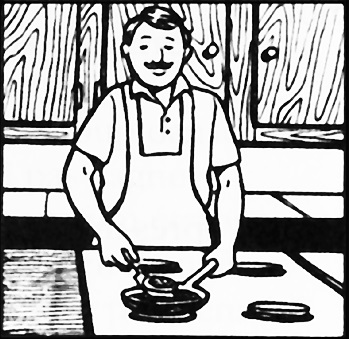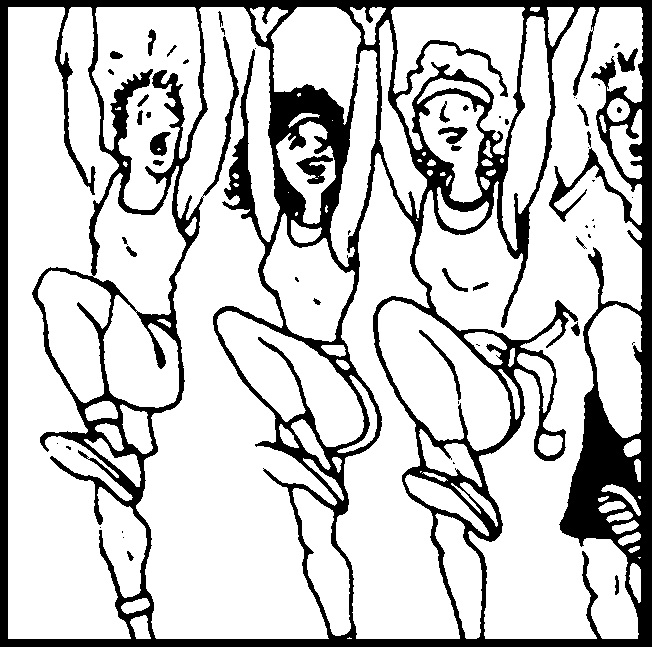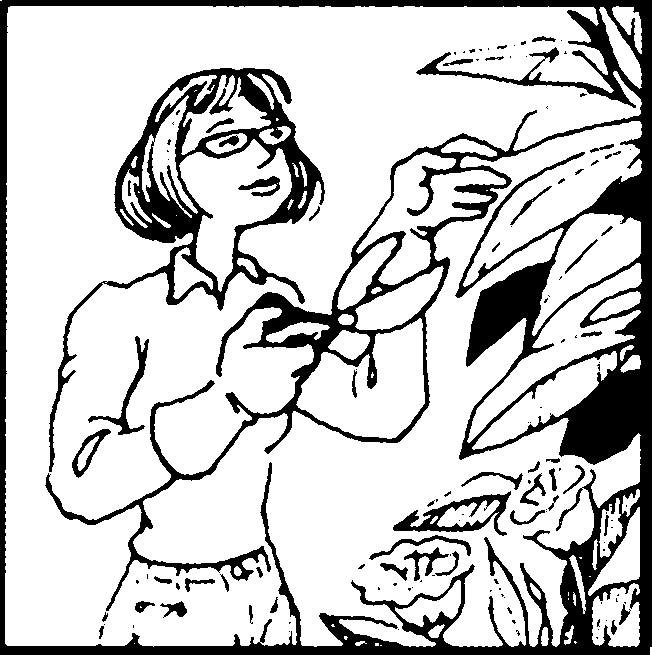Look at the pictures and fill in the blanks with the appropriate present tense form of faire plus an idiomatic expression or appropriate phrase to make a logical sentence or question.

1. Éric, est-ce que tu ____________________________________________________?

2. Papa _______________________________________________________________.

3. Nous ___________________________________________________ cet après-midi.

4. Mes amis ___________________________________________________________.

5. Je _________________________________________________________________.
1. Éric, est-ce que tu fais du ski nautique?
2. Papa fait la cuisine.
3. Nous faisons du bateau cet après-midi.
4. Mes amis font de l’exercice / du sport / de la danse.
5. Je fais du jardinage.
You might also like to view...
Complete the following note that your friend left for you. Use the tú command form. _________________ (1.Salir) temprano y _________________ (2. ir) al hotel. _________________ (3. Pedir) una habitación con aire acondicionado y _______________ (4. preguntarle) al gerente cuanto cuesta. _________________ (5. Hacer) las reservaciones y _________________ (6. decirle) al gerente que no queremos el cuarto en el primer piso. _________________ (7. Poner) en el banco el dinero que te di y _________________ (8. comprar) cheques de viajero. _________________ (9. Llamar) a Pedro, pero no _________________ (10. decirle) que vamos a tener una fiesta. _________________ (11. Ser) bueno(a) y _________________ (12. venir) a buscarme a las cinco. (8)
Fill in the blank(s) with the appropriate word(s).
Complete las siguientes oraciones con el equivalente español de las palabras o frases que aparecen entre paréntesis.
Las tiendas están ____________________, pero los bancos están ___________________. (open / closed)
1 What's your favorite way to study? Do you find it helpful to listen to a
lecture you have recorded? Or, do you like to rewrite your notes on your computer? Perhaps your favorite way is to discuss the materials covered in class with your classmates while having coffee in the cafeteria. For many years, researchers, instructors and students have been interested in finding out the best methods for improving learning. Several new theories have recently been developed which have helped both instructors and students understand how we learn. 2 In the early 1990s, Harold Gardner of Harvard University identified seven types of intelligences that influence how we learn. According to Gardner, some people have visual-spatial intelligence and learn best through using graphics, charts, television and videoconferencing. Others have bodily-kinesthetic intelligence and prefer to learn in hands-on situations and through body movement. Still others rely on musical intelligence and learn through song and rhythm. This group of learners also works best with podcasts and other multimedia. 3 The fourth type of intelligence that Gardner has identified is interpersonal. These types of learners learn best in seminars, through group activities and through email. In contrast, intrapersonal learners are often shy and prefer to work alone. They are often independent learners and benefit most from reflection and from methods such as keeping journals. Learners with linguistic intelligence are fond of words and enjoy reading, word games and working on computers. Finally, learners with logic-mathematical intelligence engage in learning best when they are solving problems or mysteries. They also enjoy experimenting to discover concepts. 4 It is often challenging for instructors to meet the needs of these many types of learners within their classrooms. In fact, as Gardner has noted, most classrooms are designed for learners with linguistic intelligence and logicalmathematical intelligence. However, many programs offer independent learning opportunities outside of the classroom that may help a variety of intelligences. These programs are often connected to labs and study centers that include computers and various digital devices as well as specific areas for study groups to meet and discuss course materials. Additionally, if students are able to identify their particular types of intelligence, they can create study activities and develop specific study habits on their own. They can modify materials created for linguistic or logical-mathematical learners to fit their types of intelligence. Harold Gardner's theory of intelligences is an old theory that researchers, instructors and students have decided doesn't apply to classroom instruction. a. true b. false
Tarea sobre la sociedad civil Mientras Amy y David ayudan a los jóvenes del pueblo a mejorar su inglés, los peruanos los ayudan con el español. Haz tú la tarea de Amy y David, escribiendo las oraciones sobre la sociedad civil de otra forma y sustituyendo las palabras subrayadas con los pronombres de complemento directo e indirecto.
1. El activista le sugirió unas soluciones sobre la vida de los suburbios al gobierno. El activista __________ __________ sugirió. 2. Las autoridades nos mostraron los nuevos planes del urbanismo a nosotros. Las autoridades __________ __________ mostraron. 3. La alcaldesa les explicó sus derechos laborales a los ciudadanos en huelga. La alcaldesa __________ __________ explicó. 4. El candidato me prometió una respuesta corta. El candidato __________ __________ prometió. 5. Las abogadas les ofrecieron un plan nuevo a los manifestantes. Las abogadas __________ __________ ofrecieron.